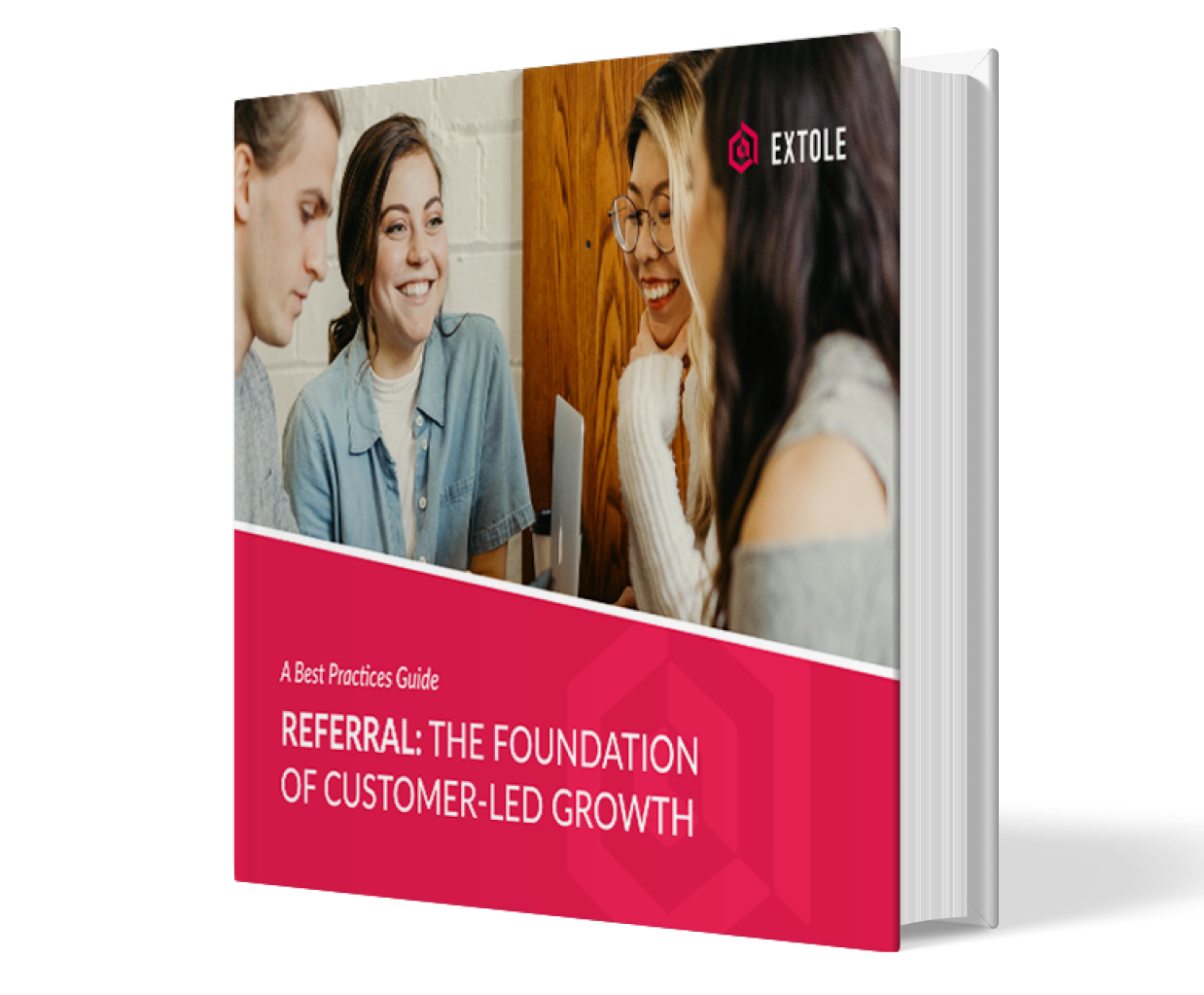Net Promoter Score (NPS) is a simple catch-all metric to measure customer loyalty that asks a customer to rate how likely they are, using a scale of zero to ten, to recommend your product or service to their family and friends.
But here’s the thing: NPS doesn’t reflect actual customer behavior. About 52% of people that answer an NPS survey will actively promote and actively criticize a brand at the same time. For example, a customer may answer favorably in an NPS survey but take to Twitter to criticize the same brand. This means brands have a skewed idea of what makes their customers happy.
Source: ReallyGoodEmails.com/Medium
Because NPS predicts the likelihood of a customer to recommend a product or service to a friend, it’s rarely a useful metric for brands. Fortunately, alternatives to NPS are available that focus on actual customer behaviors, like customer retention rates and whether a customer enjoys using your products.
Here, we break down four of the most useful metrics for marketers and business owners to measure customer loyalty in lieu of NPS.
1. Customer Effort Score (CES)
Customer Effort Score (CES) tells you if customers have a hard time performing certain actions with your brand, like navigating through online check-out or contacting a customer service representative.
While it may look similar to NPS in format, CES measures the amount of effort a customer actually has to exert to get something done with your company. It’s not a hypothetical metric – the feedback you receive is based on real customer experiences.
Usually, brands calculate CES by sending a customer a survey just after they perform an action with your brand. In that survey, ask “How easy was it to complete your purchase?” (or another desired action) and follow with a scale of answers ranging from “Very easy” to “Very difficult.” Some brands even use emojis instead of word-based responses.To measure CES, collect survey feedback over a period of time (a month, a quarter, or any time period of your choice). The above image is a useful example because it keeps the data simple with only three values: negative, neutral, and positive.
Then, total your highest responses (e.g., Easy and Very easy) and divide the number of positive responses by the total number of responses. Multiply by 100.
Number of positive responses / Total number of responses × 100 = CES
For example, if you collected 500 responses over a month and had 150 positive responses, your CES would be 30:
(150 / 500) × 100 = 30 CES
There is no industry standard to define a “good” CES. This is a metric you can define for your own company. For example, if your company is trying to mend a poor reputation for customer service, an increasing CES of 30 might be good news – while for another company, it would represent a backslide.
2. Customer Satisfaction Score (CSAT)
Customer Satisfaction Score (CSAT) is a straightforward way to find out just how satisfied your customers are with your company.
CSAT is used at the very end of a customer’s interaction with a brand, closing the loop on their experience. Unlike NPS, which measures the likelihood of customer loyalty, CSAT is based on actual customer sentiment.Source: Lattice.com
CSAT is calculated using the same formula as CES. What makes it different is the question you ask. Rather than gauging the customer’s effort to get something done with your brand, CSAT measures customer happiness.
Send customers a short, one-question survey to measure your CSAT score. Ask, “How happy are you with [brand name]?” Collect survey feedback over a period of time (a week, a month, a quarter, or any time period of your choice).
Then, add up your highest responses (e.g., Easy and Very easy) and divide the number of positive responses by the total number of responses. Multiply that number by 100 to get your CSAT.
Number of positive responses / Total number of responses × 100 = CSAT
For example, if you collected a total of 300 responses with 180 positive responses, your CSAT would be 60:
(180 / 300) × 100 = 60 CSAT
There are industry standards that define a “good” CSAT score. Scores can range from 0 to 100, and generally, you want your score to be as close to 100 as possible. The American Customer Satisfaction Index keeps an up-to-date list of CSAT scores. Here are a few industry benchmarks from 2021:
- Online retail: 77
- Restaurants: 80
- Hotels: 73
- Subscription television service: 65
- Supermarkets: 76

Referral Marketing – The Best Practices You Need to Know
Written by veteran referral marketers, this guide will help you optimize your referral marketing program and supercharge growth.
Get the Guide3. Customer Retention Rate (CRR)
Customer Retention Rate (CRR) is a metric used to measure how many customers your company is able to keep over time.This metric is a more valuable alternative to NPS because it shows you exactly how many customers you keep over time.
Customer acquisition costs have risen significantly over the past decade – as much as 75% in some industries-and are only going to increase with time. Calculating your CRR is helpful to shift the focus from acquiring new customers to retaining existing customers. In the long run, this strategy saves you money.
CRR accounts for three factors: the number of customers you’ve started with, the number you added over a period of time, and the number you ended with. To get started, you need to choose a period of time to examine. This can be a month, a quarter, or any length of time of your choosing.
This metric is calculated by subtracting the number of new customers from that period from the number of customers at the end of the period, then dividing that number by the number of customers at the start of that period. Multiply that number by 100 to get your CRR.
(Number of period-end customers – Number of period-added customers) / Number of period-start customers × 100 = CRR
For example, if you started with 50 customers, added 60, but ultimately ended with 80, your CRR would look like this:
(80 – 60) / 50 × 100 = 40% CRR
A “good” CRR varies by industry, but, generally speaking, you want to be as close to 100% as possible. Here are industry benchmarks for retention rate from 2020, compiled by CustomerGauge.
- Retail: 63%
- Fintech: 78%
- Healthcare: 77%
- Hospitality and travel: 55%
- IT and software: 77%
- Media (including streaming services): 84%
4. Customer Lifetime Value (CLV)
Customer Lifetime Value tells you the amount of revenue your company has gained from your customers. You can calculate it based on a single customer or a customer segment.
Unlike NPS, which only looks at the likelihood of a customer to refer your brand to a friend, CLV shows you the real financial impact a customer has made on your company over time. It’s a tangible metric that’s a strong indicator of customer loyalty and satisfaction.
To calculate CLV, multiply customer value by average customer lifespan.
Customer value × Average customer lifespan = CLV
To get your customer value, you need to find your company’s average purchase value and multiply that number by the average number of purchases. Your average customer lifespan is the average number of years you retain customers.
Let’s work through an example, starting with finding your customer value. Say your company’s average purchase value is $25, and your customers average 10 purchases with you over their lifetime. Your customer value is 250.
If your average customer lifespan is 12 years, multiply that number by 250. Your CLV for that customer is $3,000.
$250 × 12 = $3,000 CLV
CLV is useful for any B2B or B2C experience, but it’s particularly useful for companies with subscription-based products or services – whether it’s a video streaming service or a monthly meal-delivery kit. This metric will point out trends across a multi-year relationship with a customer. It’ll also show you churn risks, like attrition, if you see sustained dips in revenue over time.
Invest in a Referral Marketing Program, Along With Measuring Alternatives to NPS
When you use any of the metrics from this list, you’ll gain insight into who your most loyal and satisfied customers are. Track your customer satisfaction levels over time and see trends to help refresh and refine your retention strategy.
Rather than relying on NPS to ask your customers the likelihood they would refer your company to a friend, take matters into your own hands with a referral marketing tool. Extole’s referral program rewards your most loyal and satisfied customers when they help to grow your company.




